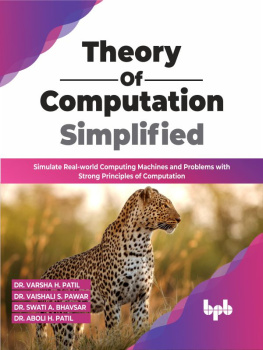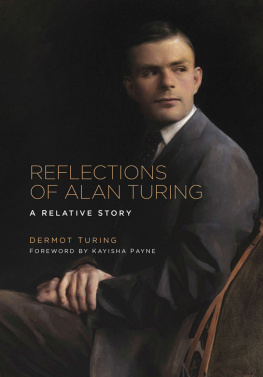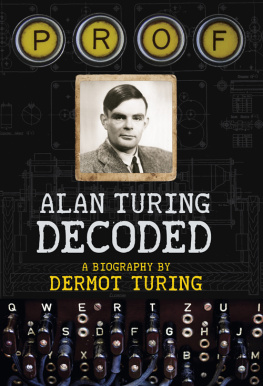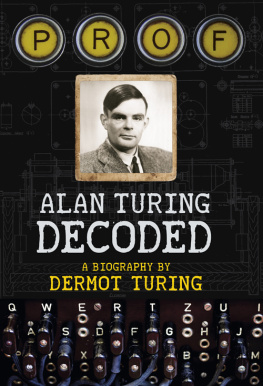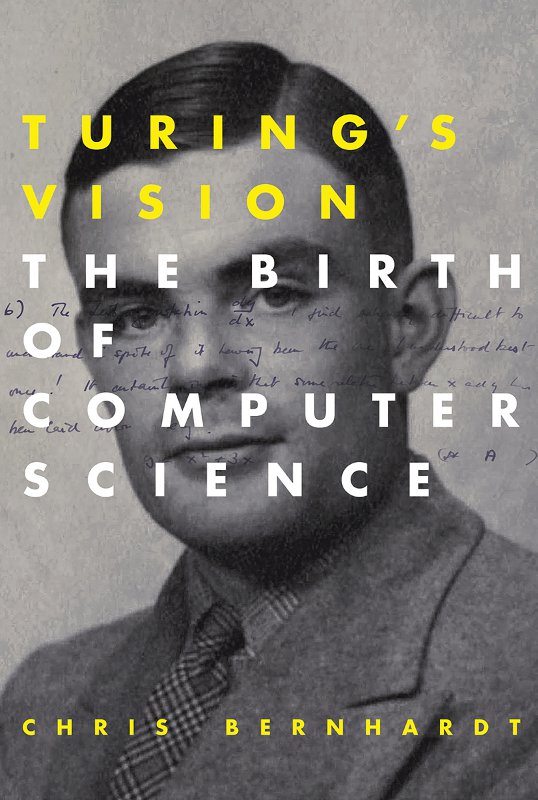Chris Bernhardt - Turing’s Vision: The Birth of Computer Science
Here you can read online Chris Bernhardt - Turing’s Vision: The Birth of Computer Science full text of the book (entire story) in english for free. Download pdf and epub, get meaning, cover and reviews about this ebook. year: 2017, publisher: The MIT Press, genre: Science. Description of the work, (preface) as well as reviews are available. Best literature library LitArk.com created for fans of good reading and offers a wide selection of genres:
Romance novel
Science fiction
Adventure
Detective
Science
History
Home and family
Prose
Art
Politics
Computer
Non-fiction
Religion
Business
Children
Humor
Choose a favorite category and find really read worthwhile books. Enjoy immersion in the world of imagination, feel the emotions of the characters or learn something new for yourself, make an fascinating discovery.

- Book:Turing’s Vision: The Birth of Computer Science
- Author:
- Publisher:The MIT Press
- Genre:
- Year:2017
- Rating:4 / 5
- Favourites:Add to favourites
- Your mark:
Turing’s Vision: The Birth of Computer Science: summary, description and annotation
We offer to read an annotation, description, summary or preface (depends on what the author of the book "Turing’s Vision: The Birth of Computer Science" wrote himself). If you haven't found the necessary information about the book — write in the comments, we will try to find it.
Turings fascinating and remarkable theory, which now forms the basis of computer science, explained for the general reader.
In 1936, when he was just twenty-four years old, Alan Turing wrote a remarkable paper in which he outlined the theory of computation, laying out the ideas that underlie all modern computers. This groundbreaking and powerful theory now forms the basis of computer science. In Turings Vision, Chris Bernhardt explains the theory, Turings most important contribution, for the general reader. Bernhardt argues that the strength of Turings theory is its simplicity, and that, explained in a straightforward manner, it is eminently understandable by the nonspecialist. As Marvin Minsky writes, The sheer simplicity of the theorys foundation and extraordinary short path from this foundation to its logical and surprising conclusions give the theory a mathematical beauty that alone guarantees it a permanent place in computer theory. Bernhardt begins with the foundation and systematically builds to the surprising conclusions. He also views Turings theory in the context of mathematical history, other views of computation (including those of Alonzo Church), Turings later work, and the birth of the modern computer.
In the paper, On Computable Numbers, with an Application to the Entscheidungsproblem, Turing thinks carefully about how humans perform computation, breaking it down into a sequence of steps, and then constructs theoretical machines capable of performing each step. Turing wanted to show that there were problems that were beyond any computers ability to solve; in particular, he wanted to find a decision problem that he could prove was undecidable. To explain Turings ideas, Bernhardt examines three well-known decision problems to explore the concept of undecidability; investigates theoretical computing machines, including Turing machines; explains universal machines; and proves that certain problems are undecidable, including Turings problem concerning computable numbers.
Chris Bernhardt: author's other books
Who wrote Turing’s Vision: The Birth of Computer Science? Find out the surname, the name of the author of the book and a list of all author's works by series.

